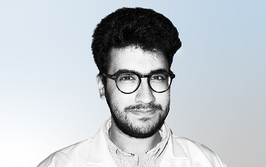Business in Brief
Collaborations, acquisitions and a potential case of misleading information…
• Sightlife Surgical have teamed up with Shigeru Kinoshita to bring a new corneal therapy to market. The treatment, which involves the injection of cultured human donor endothelial cells into the anterior chamber, has shown promising results in over 30 patients in Japan.
• Aerie Pharmaceuticals has reported that their IOP-lowering combination therapy (netarsudil ophthalmic solution 0.02% [Rhopressa] and latanoprost; Roclatan) has met the primary efficacy endpoint in their Phase III trial (Mercury 2). Over the 90-day study period, the once-daily eyedrop showed statistically significant superiority over both latanoprost and Rhopressa monotherapies for lowering IOP in patients with glaucoma and baseline IOP 20–36 mmHg.
• ClearSight’s parent company, Sharklet Technologies, announced that it has been acquired by Peaceful Union, a China-based equity medical device firm.
• In December 2016, Lensar announced it had filed a Chapter 11 bankruptcy petition. Now, they’ve announced that they will become a wholly-owned subsidiary of PDL BioPharma, in an order that has been court-approved.
• STAAR Surgical has announced that their EVO+ Visian implantable contact lens (ICL) has received a CE mark. Containing an aspheric extended depth of focus (EDOF) optic, the ICL is indicated for the correction or reduction of hyperopia and myopia between +3 D and -18 D.
• The District Court of Hamburg has issued a preliminary injunction in favor of VSY Biotechnology BV against Carl Zeiss Meditec AG (CZM) because of what VSY describe as a “misleading press release” published by Zeiss (1), which stated that “VSY Biotechnology BV and its exclusive distribution partner Fritz Ruck Ophthalmologische Systeme GmbH were convicted by the court to recall all their trifocal lenses on the market and destroy all such lenses in their possession.”
• Representatives from VSY told The Ophthalmologist: (i) this is a ruling by the German Court of First Instance; (ii) VSY have the right to appeal the judgment in the Higher District Court and if necessary, the Federal Supreme Court in Germany – a process that may take several years; (iii) this ruling would only apply in Germany; and (iv) VSY has asked the European Patent Office to invalidate CZM’s Patent EP 2 377 493 B1, claiming that this trifocality patent lacks novelty.
- PR Newsire, “Patent Case of Carl Zeiss Meditec AG and VSY Biotechnology B.V.” (2017). Available at: bit.ly/VSYCourt. Accessed May 26, 2017.
I spent seven years as a medical writer, writing primary and review manuscripts, congress presentations and marketing materials for numerous – and mostly German – pharmaceutical companies. Prior to my adventures in medical communications, I was a Wellcome Trust PhD student at the University of Edinburgh.













